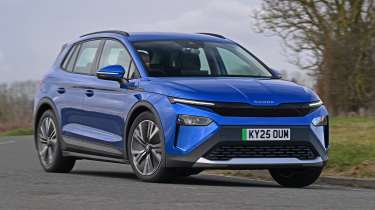For example, Auto Express’s 2025 Car of the Year, the Skoda Elroq, starts from £31,510 for the SE 50 model, which means that it could well be eligible for the ECG. However, the Government’s system focuses on powertrain specifications, rather than trim levels.
This means that, in theory, buyers could step up to the racy-looking SportLine 60 model and still get the grant because, while this starts from £37,410, the cheapest model with the 60 powertrain is in SE L trim, which costs just £33,360. Buyers would not be able to select the 85 or vRS models, though, because these start from more than the £37,000 threshold.

That is, of course, entirely dependent on whether each car is eligible for the grant in the first place, because the restrictions regarding battery and assembly location – the former having the greatest weighting on sustainability scores – could exclude a vast portion of the market.
Speaking to Auto Express, Professor of Business and Sustainability at Cardiff University, Peter Wells, explained how “the scheme takes a lifecycle carbon cost approach that penalises vehicles or batteries assembled in countries deemed to have an electricity grid with ‘high’ levels of carbon emissions per kW. This is clearly targeted at China, where coal is still a significant fuel in electric power generation.”
What will the EV grant mean for Chinese electric cars?
Bearing in mind environmental restrictions, we suspect cars hailing from China are unlikely to qualify for the ECG. While those utilising some Chinese parts, such as the Citroen e-C3, are able to squeeze into the base Tier 2 category and receive the £1,500 grant, the likes of BYD have thrown in the towel almost immediately; the Chinese giant is now instead offering five years of free maintenance on its EVs and has increased the battery warranty to 200,000km (155,000 miles) or eight years on selected models.


